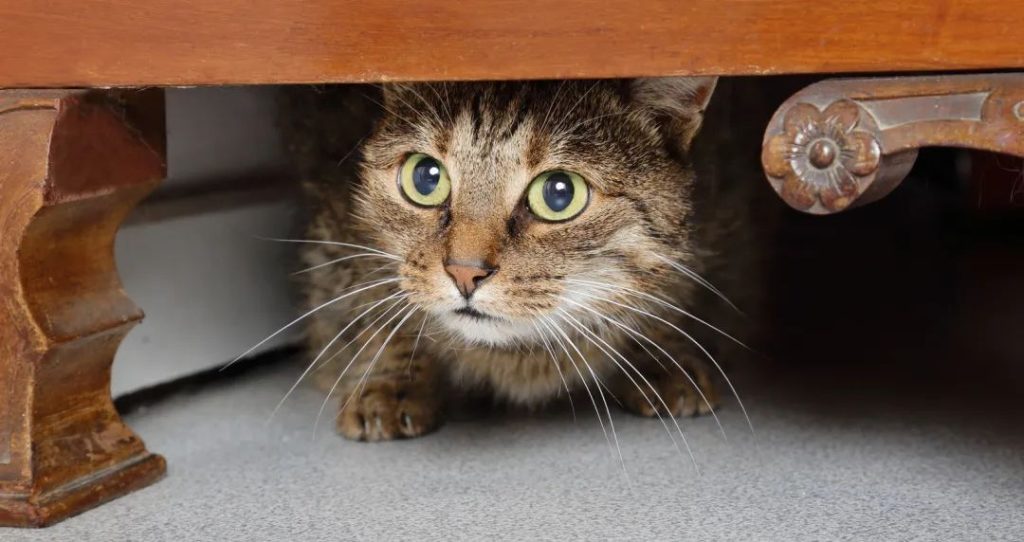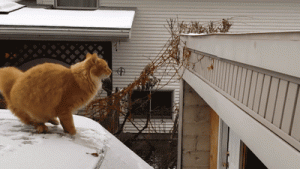What should you do when your pet keeps repeating bad behavior? Scratching the sofa, biting, peeing outside the litter box, tipping over the trash, licking plastic bags, chewing on wires…Physical punishment won’t fix these behaviors. In fact, scolding or hitting your cat can make the problem worse and even harm their health.Why is it a bad idea to punish pets for misbehavior? What effects can punishment have, and how can you train your cat the right way?
-
Punishment Doesn’t Work on Cats — It’s True
We often say: cats cannot understand the logic of “I did X, so I am being punished.” While this may sound a bit hard to believe… for cats, it’s true!A 2009 study found that, compared to humans, other primates, dogs, and birds, cats have the weakest causal reasoning. Expecting a cat to understand layers of logic and then figure out “why I was punished” afterward is really unfair — chances are, they simply don’t get it.
-
So Why Does a Cat “Seem to Learn Its Lesson” After Being Hit?
Some owners might say, “But my cat behaves after I hit it…”In reality, the cat doesn’t feel guilt or shame for doing something wrong.The reason cats hide or avoid you after punishment isn’t because they know they were wrong; it’s a simple conflict-avoidance strategy. For example, after scolding your cat, it may hide, lower its head to avoid eye contact, or even roll over — not out of remorse, but because your shouting or exaggerated gestures frighten it, triggering a natural self-preservation instinct.This is similar to how a cat hides when a stranger enters the home, or how a weaker cat submits during a fight — essentially avoiding conflict.Sometimes cats may seem to “correct” their behavior after being punished. This doesn’t mean they understand what they did wrong. Their actions are motivated purely by avoiding conflict.If a cat scratches the sofa and gets hit, it might avoid that spot — not because it knows scratching is wrong, but because it thinks “this territory belongs to the big human; I’d better stay away and mark somewhere else secretly.”Similarly, if a cat urinates outside the litter box and gets punished, it may choose a less obvious location next time, thinking “I don’t want to intrude on someone else’s territory.”In other words, punishment may change the location of the behavior but doesn’t stop the behavior itself.

-
How Should Cats Actually Be “Trained”?
A cat’s behavior is the direct result of instinct, environment, and the interaction between them. Therefore, “disciplining” a cat is really about behavior modification, not punishment.The goal is to guide your cat to associate correct behaviors with rewards, while still allowing them to fulfill their natural instincts.① Identify the Root CauseMost “bad” behaviors are simply expressions of natural feline instincts:Scratching furniture — to sharpen claws and mark territoryBiting — for play and hunting simulationUrinating outside the litter box — for marking and eliminationThe behavior itself is physiologically normal; the problem is the object or method. You need to find the root cause.② Prepare Two Plans and Learn Conflict Resolution.You cannot eliminate instinct. Instead, create environmental conditions and provide proper guidance:Scratching furniture: If the cat can’t scratch the sofa and has no scratching post, it may scratch the curtains or sneakily scratch when you’re not looking.Biting: If the cat has no toys to expend energy, it may run around at night or play roughly with other cats.Urinating outside the box: Punishment alone won’t help; the cat may just find another spot or hold it in.In most cases, the cat is not deliberately trying to upset you — it’s usually the “victim” of misunderstanding. After identifying the root cause and preparing your plan, guide your cat to a “win-win” solution that satisfies both human and feline needs.③ Use Methods Cats Can Understand.Timing is crucial. Provide feedback during the behavior, not afterward.Punishment tools like noise cans, spray bottles, unpleasant smells, or tossing soft objects can create aversive stimuli. Some cats may develop a memory like “doing this will scare me or bring bad luck.”However, not all cats understand these cues. Some may only fear the object (like a spray bottle) without connecting it to the behavior. Some may even start avoiding you, which is counterproductive.Positive reinforcement is more effective:Reward desired behavior immediately with treats, gentle praise, or play.Cats better remember information related to food or survival, so associate correct behaviors with immediate rewards.Timing matters:Don’t give a toy right after a cat bites — it may think “biting gives me playtime.”Instead, play with the cat when it’s naturally energetic, then reward with a treat afterward. This creates the memory of “after playtime, I get a treat”, reinforcing correct behavior.
Easier said than done… behavioral change doesn’t happen overnight. Just as it takes humans about 21 days to form a new habit, helping your cat correct its behavior also requires patience and a calm, gradual approach.





